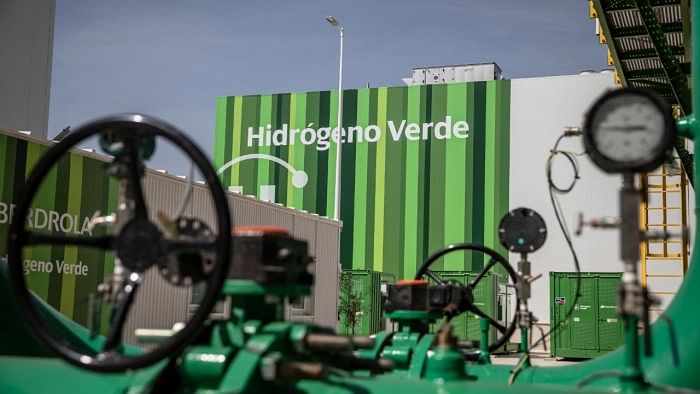
The Centre on Wednesday approved the Rs 19,744 crore National Green Hydrogen Mission seeking to turn India into a global hub for production, utilisation, and export of Green Hydrogen and its derivatives - the cleanest form of energy that the world hopes would meet global demand while fulfilling climate action goals.
"The Union Cabinet has approved the National Green Hydrogen Mission The initial outlay for the mission has been kept at Rs 19,744 crore. Out of this, the government has allocated Rs 17,490 crore for the SIGHT (Strategic Interventions for Green Hydrogen Transition) programme, Rs 1,466 crore for pilot projects, Rs 400 crore for R&D, and Rs 388 crore towards other mission components,” Union Minister for Information and Broadcasting Anurag Thakur told journalists in Delhi.
Green hydrogen refers to splitting water molecules into hydrogen and oxygen using electricity generated from a renewable source, and using the same hydrogen as a source of energy in transportation, industry, power, chemicals and other sectors.
Hydrogen is produced even now with its demand set to increase to 500-680 million tonnes by 2050 from 87 million metric tons in 2020. But there is a catch - over 95% of current hydrogen production is fossil-fuel based, and very little hydrogen currently produced is “green” in nature.
India’s National Green Hydrogen Mission is expected to add about 125 GW of renewable energy capacity to the country.
The cabinet decision would help promote Green Hydrogen through an incentive-based programme as the government aims for an annual production of five million tonnes of Green Hydrogen by 2030, cutting down 50 million tonnes of carbon emission and saving Rs one lakh crore rupees on fossil fuel imports.
The decision comes a day after Prime Minister Narendra Modi drew scientists’ attention towards the National Hydrogen Mission and its enormous possibilities at the 108th Indian Science Congress.
“To make it successful, it is necessary that various essential components like electrolyzers should be made in the country itself. If there is scope for any new options in this direction, then research should be carried out in that direction also. Our scientists and the industry have to work together in this regard,” Modi said.
The Council of Scientific and Industrial Research last year launched a pan-Indian programme to develop various components required for the mission in partnership with big industrial players and the Ministry of New and Renewable Energy that would draft the implementation plans.
"The Green Hydrogen Mission will require three types of technologies – electrolyzers to produce green hydrogens; various types of fuel cells where it would be used depending on the applications and storage tanks where it would be stored. We have a pan-India programme on green hydrogen in partnership with industry,” N Kalaiselvi, director general of the Council of Scientific and Industrial Research and one of key brains behind the mission, told DH. Half-a-dozen CSIR laboratories are involved in technology development.
Indian companies including Reliance, NTPC, Adani Enterprises, Indian Oil, JSW Energy and ReNew Power are making investments in the green hydrogen sector.
Thakur said by 2030, the government was expecting Rs 8 lakh crore investments in the green hydrogen sector and hoping to create more than 6 lakh jobs.
“The incentive aims to make green hydrogen affordable and bring down its cost over the next five years. The mission will help India to cut emissions and become a major exporter in the field”, he said.
As part of a global effort to reduce greenhouse gas emission, many countries including the USA approved incentives for promoting green hydrogen projects.
The Indian mission will have wide ranging benefits — creation of export opportunities for green hydrogen and its derivatives; decarbonisation of industrial, mobility and energy sectors; reduction in dependence on imported fossil fuels and feedstock; development of indigenous manufacturing capabilities; creation of employment opportunities; and development of cutting-edge technologies, an official statement said.

